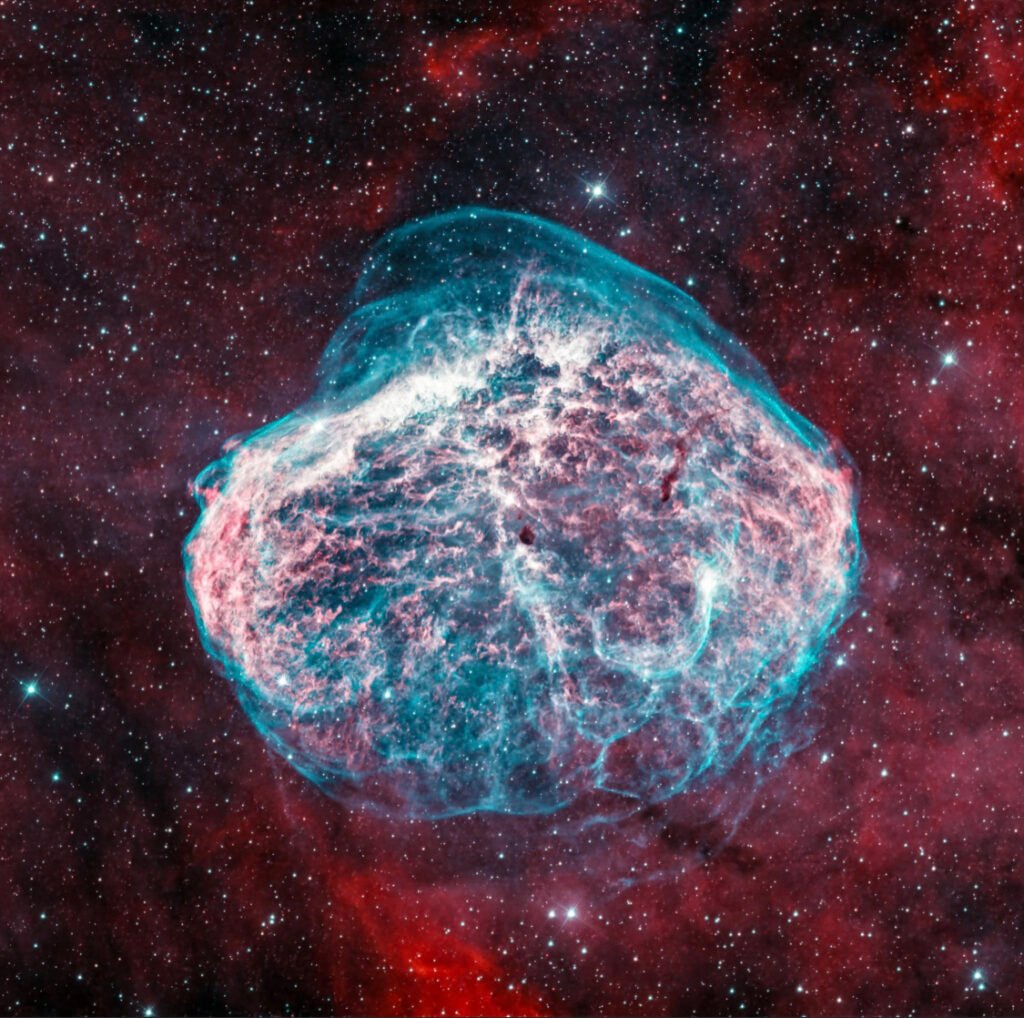
The Crescent Nebula
This is the most detailed image I’ve ever captured of NGC 6888, also known as the Crescent Nebula. One of the most beguiling objects of our summertime skies in the northern hemisphere, it sits 5,000 lightyears from Earth and is the spectacular display of the final stages of a giant, dying star. At its core 250,000 to 400,000 years ago, Wolf-Rayet star WR 136 shed its outer layers in successive shockwaves when it entered its red giant phase. In a successive stage, intense fast moving super energized stellar wind collided with these expanding outer layers causing them to ionize and glow.
I captured this in an HOO palette, which shows complex pinks and reds and purples of ionized hydrogen together with the beautiful blues of the outer shell of ionized oxygen. I also love the subtle details that came out when capturing this with one of my larger scopes (Planewave CDK17), including the small dark nebulae that lay in the foreground.
I’ve been very busy recently with a surprise project (more details soon) so haven’t had a chance to post recently, but I have been imaging every clear night and have a serious backlog of content to share with you.
I hope you like it and have a great day!

Leave a Reply